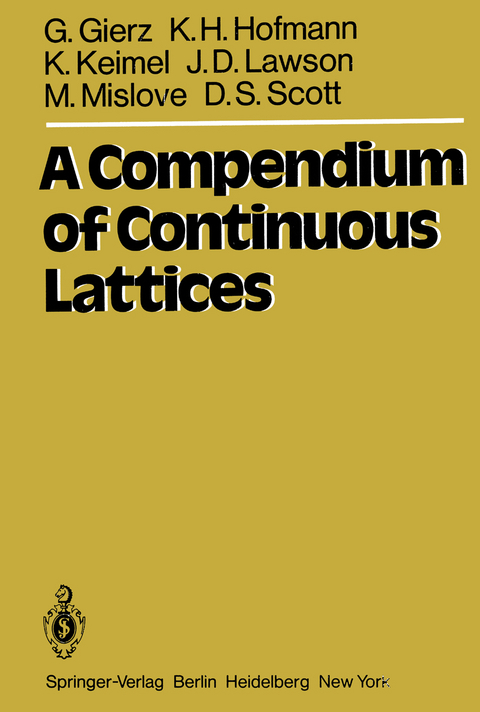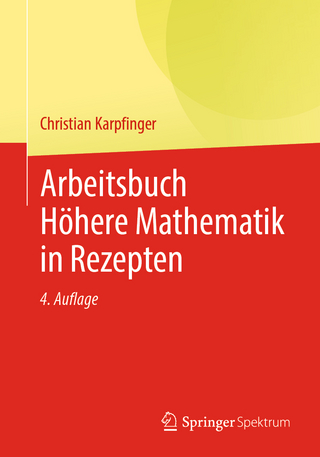
A Compendium of Continuous Lattices
Springer Berlin (Verlag)
978-3-642-67680-2 (ISBN)
O. A Primer of Complete Lattices.- 1. Generalities and notation.- 2. Complete lattices.- 3. Galois connections.- 4. Meet-continuous lattices.- I. Lattice Theory of Continuous Lattices.- 1. The "way-below" relation.- 2. The equational characterization.- 3. Irreducible elements.- 4. Algebraic lattices.- II. Topology of Continuous Lattices: The Scott Topology.- 1. The Scott topology.- 2. Scott-continuous functions.- 3. Injective spaces.- 4. Function spaces.- III. Topology of Continuous Lattices: The Lawson Topology.- 1. The Lawson topology.- 2. Meet-continuous lattices revisited.- 3. Lim-inf convergence.- 4. Bases and weights.- IV. Morphisms and Functors.- 1. Duality theory.- 2. Morphisms into chains.- 3. Projective limits and functors which preserve them.- 4. Fixed point construction for functors.- V. Spectral Theory of Continuous Lattices.- 1. The Lemma.- 2. Order generation and topological generation.- 3. Weak irreducibles and weakly prime elements.- 4. Sober spaces and complete lattices.- 5. Duality for continuous Heyting algebras.- VI. Compact Posets and Semilattices.- 1. Pospaces and topological semilattices.- 2. Compact topological semilattices.- 3. The fundamental theorem of compact semilattices.- 4. Some important examples.- 5. Chains in compact pospaces and semilattices.- VII. Topological Algebra and Lattice Theory: Applications.- 1. One-sided topological semilattices.- 2. Topological lattices.- 3. Compact pospaces and continuous Heyting algebras.- 4. Lattices with continuous Scott topology.- Listof Symbols.- List of Categories.
| Erscheint lt. Verlag | 25.1.2012 |
|---|---|
| Zusatzinfo | XX, 371 p. |
| Verlagsort | Berlin |
| Sprache | englisch |
| Maße | 170 x 244 mm |
| Gewicht | 687 g |
| Themenwelt | Mathematik / Informatik ► Mathematik ► Algebra |
| Schlagworte | Algebra • Boundary element method • Collaboration • Computer • Function • Functional • Functions • function space • language • lattices • Mathematics • Semantics • Stetiger Verband • Story • Time |
| ISBN-10 | 3-642-67680-4 / 3642676804 |
| ISBN-13 | 978-3-642-67680-2 / 9783642676802 |
| Zustand | Neuware |
| Haben Sie eine Frage zum Produkt? |
aus dem Bereich


